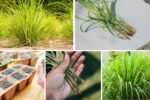For centuries, comfrey has been cherished in herbal medicine for its remarkable healing properties. Known for its fast-growing foliage and bell-shaped flowers, this resilient plant is packed with compounds like allantoin, which helps stimulate cell regeneration and repair damaged tissues. Comfrey has been traditionally used to treat wounds, bruises, joint pain, and even skin irritations. With so many exotic varieties to choose from, you can cultivate both beauty and wellness in your garden. Let’s explore 10 exotic comfrey plants celebrated for their powerful natural healing abilities.
1. Russian Comfrey (Symphytum × uplandicum)

One of the most popular comfrey hybrids, Russian comfrey is prized for its rapid growth, abundant leaves, and deep taproot that mines nutrients from the soil. Herbalists value it for its high allantoin content, making it excellent for healing bruises, sprains, and minor wounds. It’s also commonly used in poultices for muscle aches and joint pain. Beyond its medicinal uses, this hardy plant improves soil health and is an outstanding companion in permaculture gardens, producing valuable mulch and compost material.
2. True/Common Comfrey (Symphytum officinale)
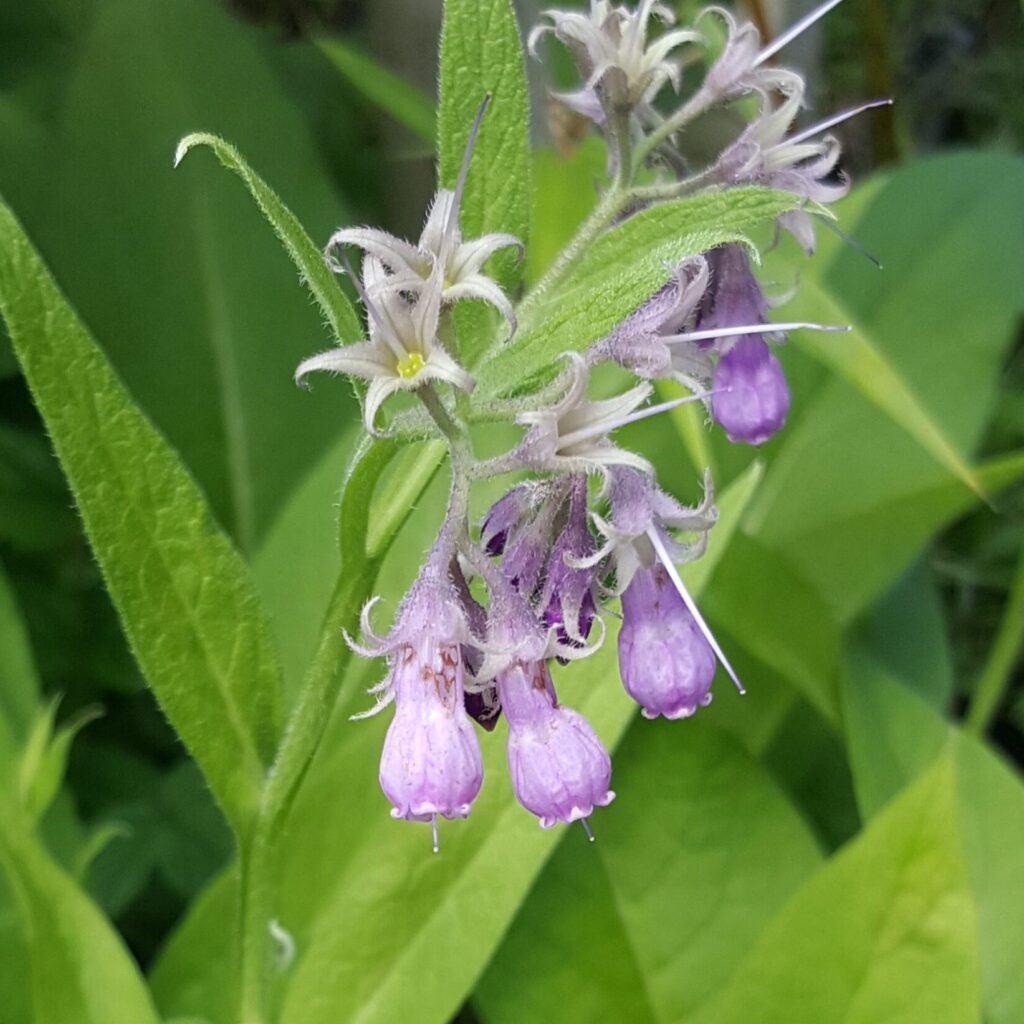
This ancient medicinal herb is often referred to as the “bone-knit” plant due to its historic use in treating fractures and sprains. True comfrey boasts bell-shaped purple, pink, or cream flowers and broad, hairy leaves loaded with healing compounds. It’s commonly made into salves and ointments for skin irritations, ulcers, and insect bites. Additionally, the plant’s roots are rich in tannins and rosmarinic acid, offering anti-inflammatory and astringent properties. Gardeners also love it for attracting pollinators and enriching the soil.
3. Caucasian Comfrey (Symphytum caucasicum)

Native to the Caucasus region, this exotic comfrey species is known for its striking deep blue flowers and soft, ovate leaves. While slightly less potent than its Russian counterpart, it still carries notable healing abilities, especially for skin care and wound treatments. Caucasian comfrey thrives in cooler climates and shady spots, making it perfect for woodland gardens. Its leaves can be used in poultices and compresses to soothe burns, insect stings, and sprains. It’s also a beautiful addition to pollinator-friendly landscapes.
4. White Comfrey (Symphytum orientale)

A rare and visually delicate species, White comfrey produces soft white bell-shaped flowers that bloom in spring. While its medicinal properties mirror those of True comfrey, White comfrey is particularly valued for its gentle, soothing qualities, making it suitable for sensitive skin treatments. The leaves and roots can be used in herbal poultices for cuts, abrasions, and sunburns. It’s also an ornamental favorite in shaded garden corners and moist soils, offering a soft, healing presence in both medicine cabinets and flower beds.
5. Hidcote Blue Comfrey (Symphytum ‘Hidcote Blue’)

This cultivated variety is loved for its vibrant blue flowers and vigorous growth. Hidcote Blue comfrey holds the same healing benefits as other comfrey types but stands out for its stunning ornamental appeal. Herbalists often turn its leaves into compresses for inflamed joints, bruises, and sprained ankles. It’s also used in natural skincare for its tissue-regenerating qualities. Fast-growing and hardy, it’s an excellent plant for both medicinal gardens and wildlife areas, providing early nectar for bees and butterflies.
6. Dwarf Comfrey (Symphytum grandiflorum)
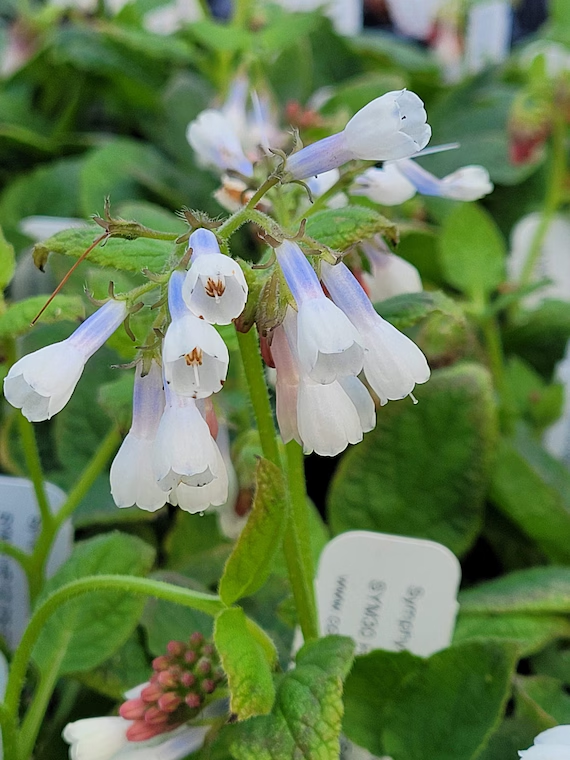
Ideal for small spaces, Dwarf comfrey produces lush, low-growing foliage and large, bell-shaped flowers in shades of yellow, cream, and violet. While it’s a compact plant, it doesn’t skimp on healing power. Its leaves and roots are rich in allantoin and tannins, making it a favorite for topical applications. Use it in salves and poultices for sore muscles, minor burns, and abrasions. Dwarf comfrey also makes a wonderful ground cover for shade gardens, providing medicinal value and ornamental charm.
7. Azure Blue Comfrey (Symphytum azureum)
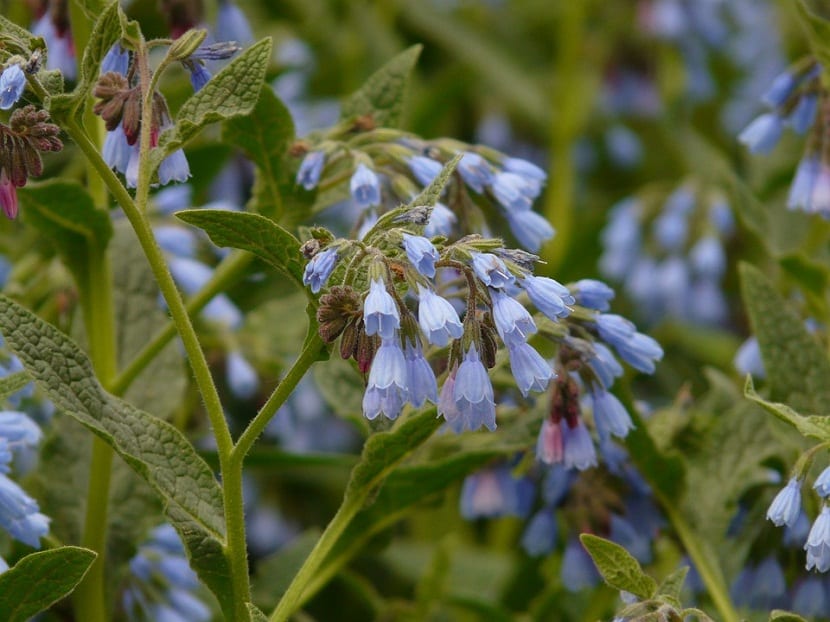
Native to the mountainous regions of Turkey and the Caucasus, Azure Blue comfrey is known for its clear sky-blue blooms and elongated, lance-shaped leaves. Herbalists treasure this exotic species for its wound-healing properties and anti-inflammatory effects. Traditionally, poultices made from its leaves were applied to sprains, wounds, and bruises. Its beauty makes it a sought-after plant for cottage gardens and medicinal borders, where it adds a splash of color while offering natural healing remedies.
8. Bulgarian Comfrey (Symphytum bulgaricum)
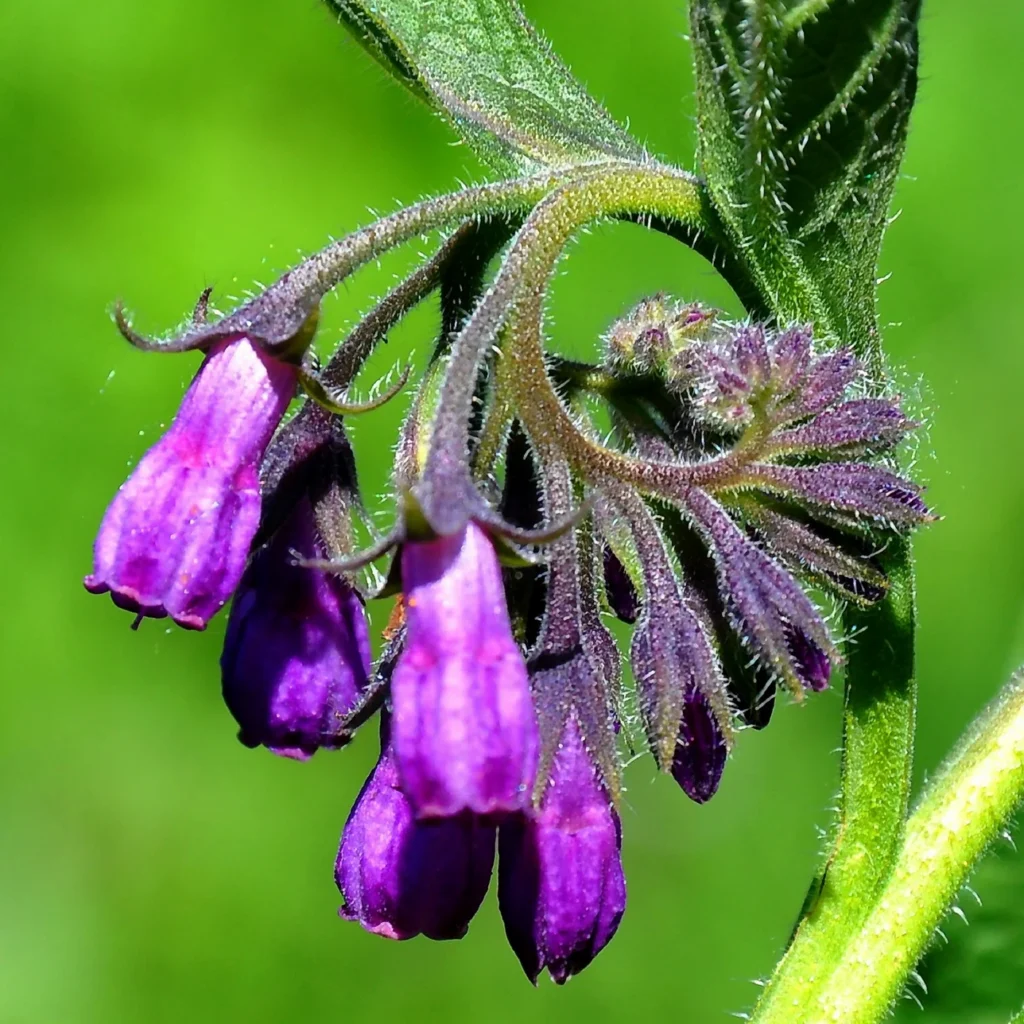
Bulgarian comfrey is a cold-hardy, resilient variety known for its light blue to lavender flowers and medicinal potency. Traditional Eastern European herbalists have long used this plant to treat muscle pains, joint stiffness, and skin infections. Its high allantoin concentration promotes rapid tissue repair, making it a go-to ingredient in natural salves and compresses. This comfrey species also thrives in poor, rocky soils, making it a valuable plant for tough, marginal garden areas where few other medicinal herbs flourish.
9. Tuberous Comfrey (Symphytum tuberosum)
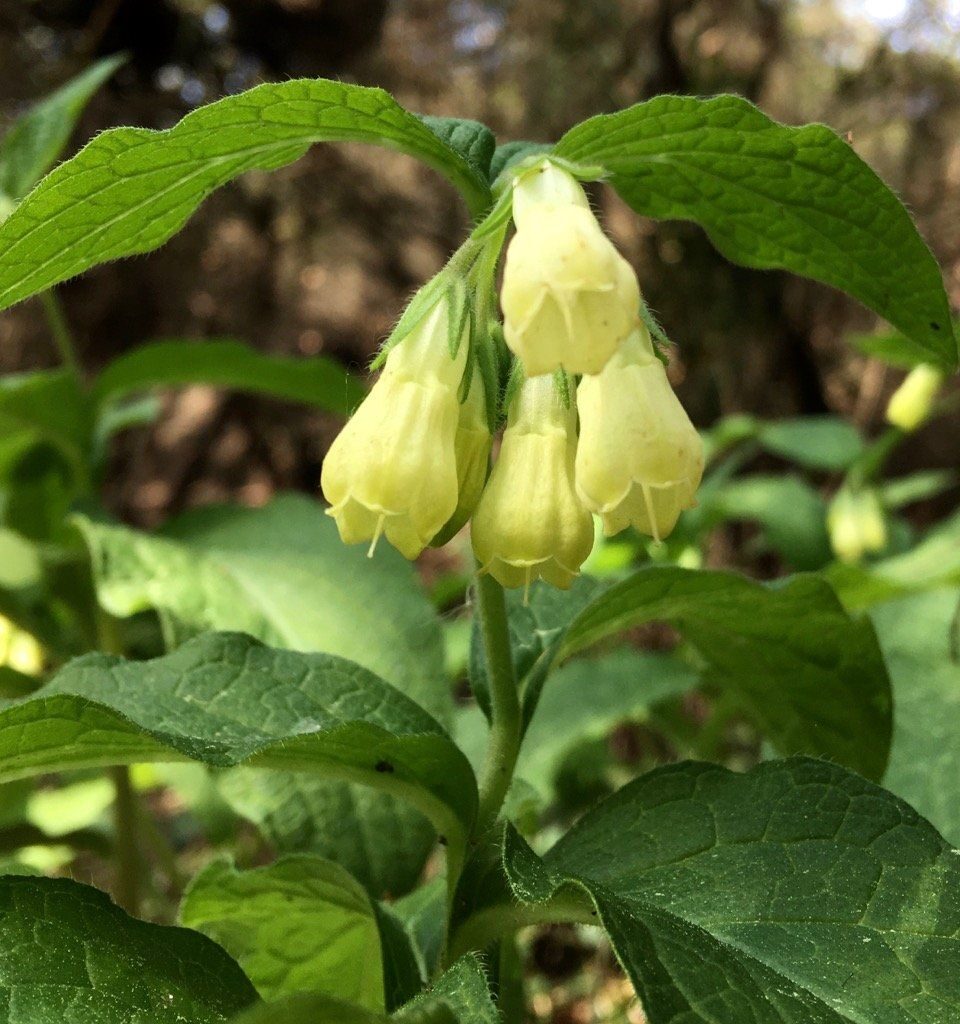
Tuberous comfrey offers pale yellow, drooping flowers and broad, hairy leaves. Its roots form tuber-like structures, which have historically been harvested for their healing properties. Herbalists prepare poultices and decoctions from the leaves and roots to treat skin wounds, bruises, and muscle soreness. Its gentle, soothing nature makes it a good choice for sensitive skin treatments. Tuberous comfrey also acts as an effective living mulch, suppressing weeds and enriching soil while offering medicinal benefits for the home gardener.
10. Purple Comfrey (Symphytum × uplandicum ‘Purple’)
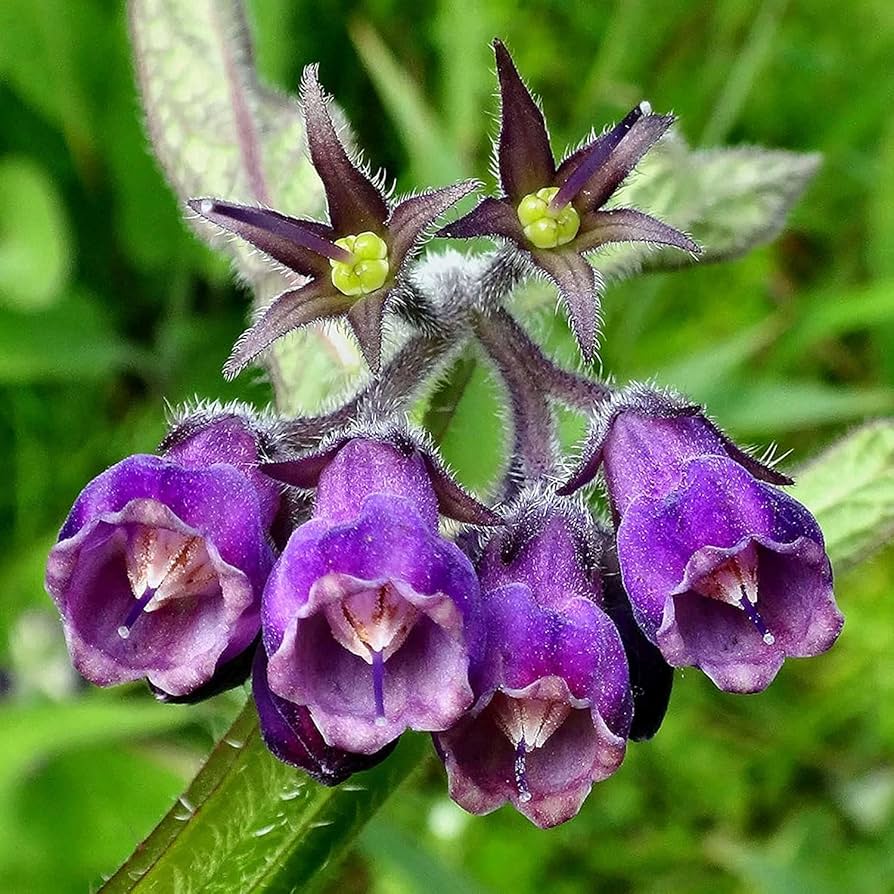
A variation of Russian comfrey, Purple comfrey boasts deep violet to purple flowers that brighten up herbal gardens while delivering traditional healing qualities. Its leaves are rich in cell-regenerating allantoin and anti-inflammatory compounds, often used in compresses for sprains, arthritis, and muscle fatigue. Beyond its healing applications, Purple comfrey is beloved by beekeepers and permaculturists for its abundant nectar and soil-building capabilities. It’s a fast-growing, hardy addition to any wellness garden with the bonus of stunning floral displays.


